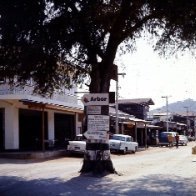Location of ground rod, how deep in ground, type of ground rod, where to buy, how long/material (copper?)
-
Recently Browsing 0 members
- No registered users viewing this page.
-
Topics
-
-
Popular Contributors
-
-
Latest posts...
-
57
Report Trump Deploys Nuclear Subs Amid Russia Tensions
I wonder how fare Triumph will go to deflect from the "fake" Epstein files -
35
Report Pattaya's Walking Street to Glow with New 3D LED Sign
Now this was the Good Old Days Pattaya.. -
29
Having "fun" is generally unhealthy.
Their mistake was making it a lifestyle instead of simply a hobby. And not choosing wisely, fun vs addictive substance. That includes alcohol, and one of the worse. -
26
65000 baht renewal and wise
Sorryi have been waiting to see if a Wise statement has been used before A couple that that i am good friends with, went to do their extension for the first time after using an agent before The husband used the 800000 method and had no problem, but when the wife wanted to use the 65000 method she had a 13 months of statements from BB Bank which were not accepted although she said they had FTT for all foreign transaction, (to be honest I am not convinced that was correct) she was then asked to show Wise statements, which she did but these were not accepted because it was listed the wrong way, the only way to get here extension was to pay money which she did -
98
Report Canada to Recognise Palestinian State, Following France and UK
Not aware of any disagreements with you. Come to think of it, not cognizant of any agreements either. -
98
Report Canada to Recognise Palestinian State, Following France and UK
They could go to the USA. No neighboring country wants them, I wonder why?
-
-
Popular in The Pub








Recommended Posts
Create an account or sign in to comment
You need to be a member in order to leave a comment
Create an account
Sign up for a new account in our community. It's easy!
Register a new accountSign in
Already have an account? Sign in here.
Sign In Now